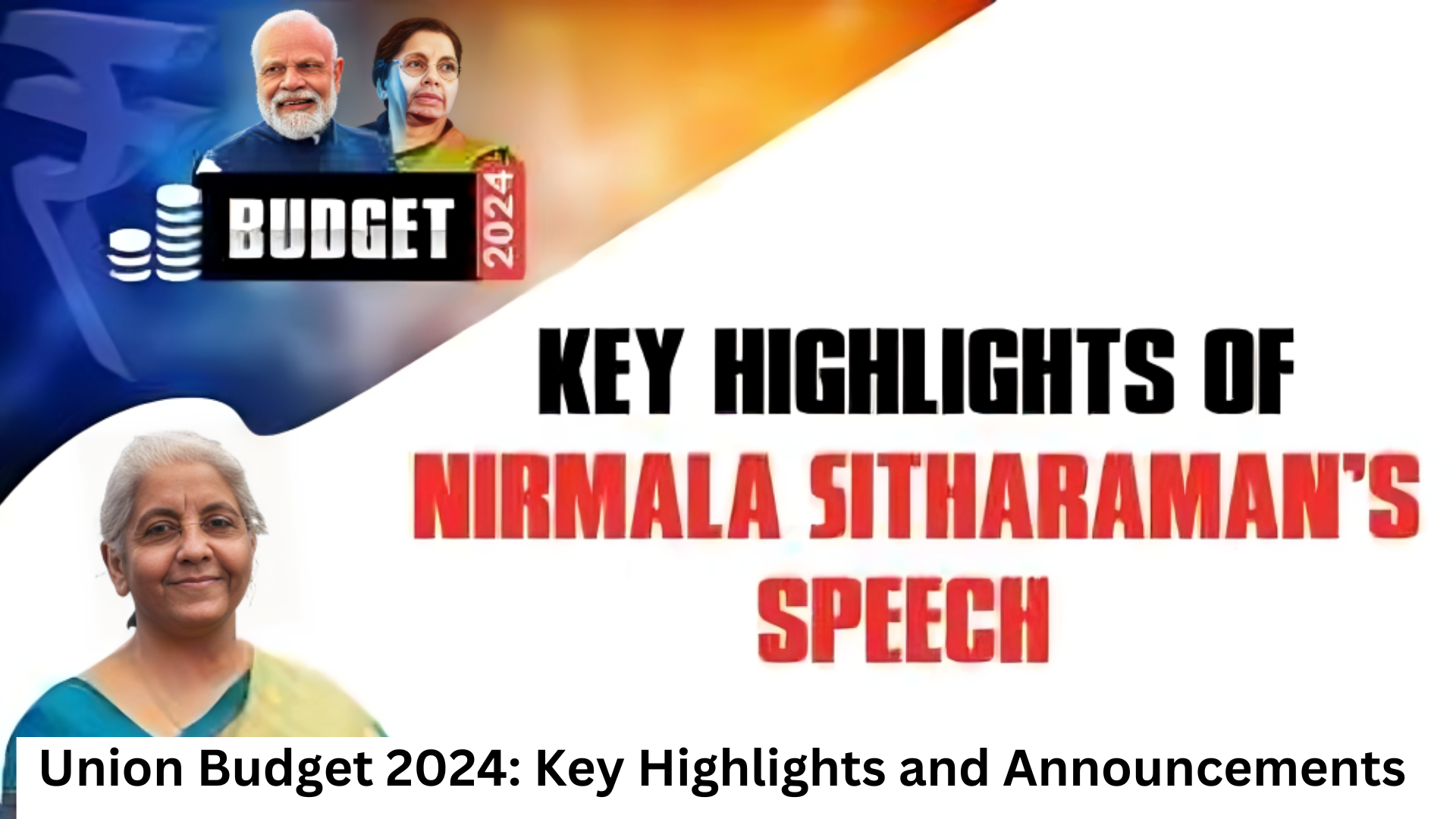
The Union Budget 2024, presented by Finance Minister Nirmala Sitharaman, outlines several significant measures aimed at driving India’s economic growth, fostering inclusive development, and empowering various sectors. Here are the key highlights:
Priority Areas for FY 2024-25
The budget identifies nine priority areas:
- Productivity and Resilience in Agriculture
- Employment and Skilling
- Inclusive Human Resource Development and Social Justice
- Manufacturing and Services
- Urban Development
- Energy Security
- Infrastructure
- Innovation and R&D
- Next-Gen Reforms
Employment and Skilling Initiatives
To address the growing need for skilled labor and employment, the government has introduced five new schemes with a budget of Rs 2 lakh crore. These schemes aim to upskill and create job opportunities for 4.1 crore youth over the next five years. Key initiatives include:
- A scheme offering a one-month wage of up to Rs 15,000 for those joining the formal sector, benefiting 2.1 crore youths.
- An internship program providing internships at top companies for 1 crore youth, offering Rs 5,000 per month along with a one-time assistance of Rs 6,000.
- Three new employment-linked incentive schemes.
Agriculture Funding
An allocation of Rs 1.52 lakh crore has been made for agriculture and allied sectors. This includes initiatives to help 1 crore farmers adopt natural farming practices and the release of 109 new crop varieties.
Tax Reforms
The budget introduces several tax reforms to simplify and enhance the new tax regime. Notable changes include:
- No tax for income up to Rs 3 lakh under the new tax regime.
- Simplified Foreign Direct Investment (FDI) regulations to boost inflows and prioritize investments.
Women Empowerment
The budget emphasizes the empowerment of women through various measures:
- Provision of Mudra Yojana loans to women entrepreneurs.
- Increased female enrollment in higher education, with significant representation in STEM courses.
- Legislative reforms such as the criminalization of Triple Talaq and reservation of seats for women in legislative bodies.
- Allocation of over seventy percent of houses under the PM Awas Yojana to women as sole or joint owners.
Housing Initiatives
The budget plans for 3 crore additional houses in rural and urban areas, with necessary financial allocations to support this initiative.
Support for Andhra Pradesh
An allocation of Rs 15,000 crore has been designated for Andhra Pradesh, with additional funds expected in future years.
Student Loans
E-vouchers worth Rs 10 lakh will be issued to 1 lakh students, providing an interest subvention of 3% on their loans.
Economic Management
The budget highlights a multipronged approach to economic management, emphasizing:
- Robust infrastructure development across physical, digital, and social sectors.
- Participation of all regions in economic growth.
- The introduction of digital public infrastructure to formalize the economy.
- GST reforms enabling ‘One Nation, One Market, One Tax’.
- Strengthening the financial sector to make savings, credit, and investments more efficient.
Global and Strategic Initiatives
The budget also highlights India’s strategic role in global affairs, including:
- The India-Middle East-Europe Economic Corridor, seen as a strategic and economic game changer.
- India’s leadership during the G20 Presidency amidst global economic challenges, showcasing the country’s resilience and ability to build consensus on global issues.
Vision for ‘Viksit Bharat’
The vision for ‘Viksit Bharat’ focuses on transforming India into a prosperous nation by 2047, with modern infrastructure and opportunities for all citizens. The strategy for achieving this includes fostering sustainable growth, enhancing productivity, and creating inclusive opportunities.

